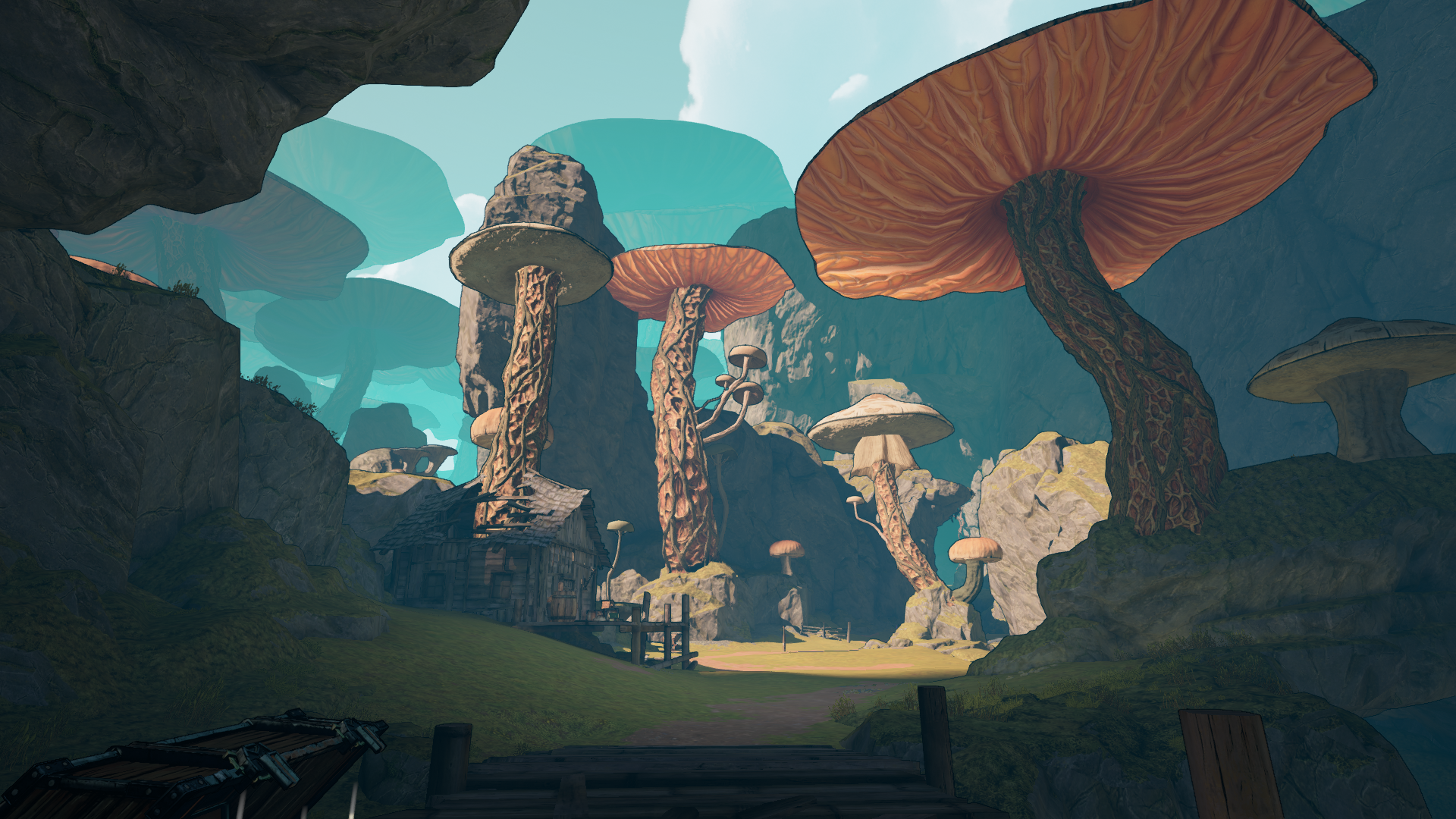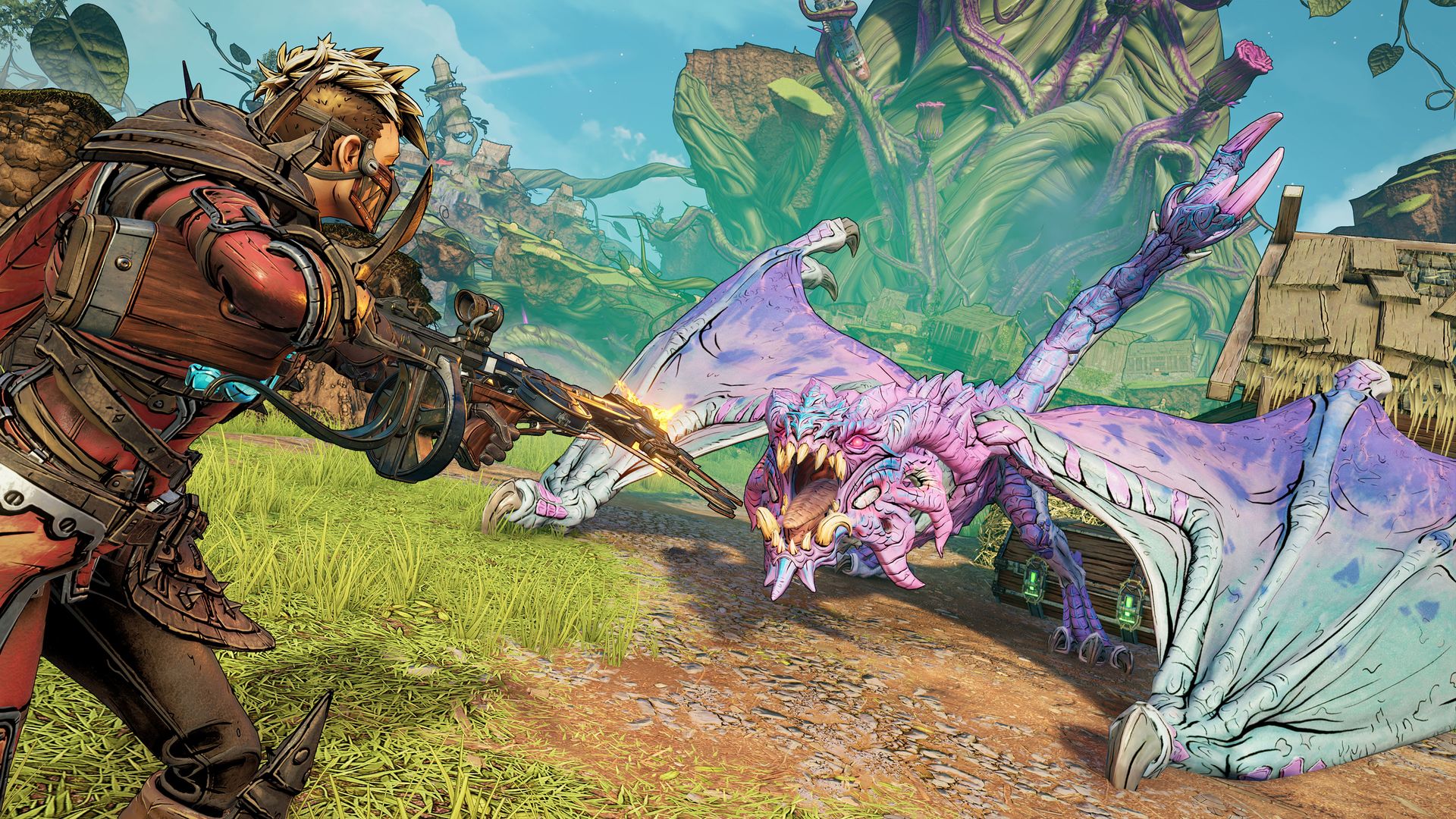I have to admit that in the lead up to Tiny Tina’s Wonderlands, I didn’t actually feel that hyped. The introduction of dragons and magic caught my interest, for sure, but I was still riding the Elden Ring high of the past month. Frankly, a part of me (ashamedly) felt like I’d had so much fun becoming Elden Lord, that no game would hit the same ever again. Well, Tiny Tina’s Wonderlands did snap me out of that, thankfully. It reminded me of just how incredibly different two games can be while sharing the same elements at their core: kill enemies, collect loot, kill bigger enemies, be a hero, and so forth. Tiny Tina’s Wonderlands isn’t the perfect game (and it need not be), yet for me personally it was a much-needed breath of fresh air and some fun, at first – without too much frustration. These first impressions didn’t last, however, for more than a few hours. Tiny Tina’s Wonderlands sees the titular Tiny Tina granted the main stage once again. It’s not the first time she’s been thrust into the spotlight – you might remember the release of the Borderlands 2 DLC, Tiny Tina’s Assault on Dragon Keep, which saw players enact one of Tiny Tina’s D&D campaigns for a couple of hours. Well, Tiny Tina’s Wonderlands is essentially this DLC transformed into a full-game, with familiar faces (such as Claptrap and Torgue) appearing alongside new mechanics like a tabletop Overworld, melee combat, and character creation. Being able to craft a character (almost) fit for a TTRPG felt rather immersive, yet overall, gameplay feels no different to what we’ve all come to expect from that tried-and-tested, now-traditional Borderlands formula. And that’s fine, given that this is effectively a spiritual successor to the Borderlands series, in a sense. But it’s also a satirical spin-off, trading DnD for ‘Bunkers & Badasses’. Not only do you play an action-packed, shoot-and-loot RPG, but occasionally you’re whisked away into a cutscene that reminds you that the RPG you’re playing out is, in fact, a figment of the imagination of these characters and their TTRPG campaign. As you may have guessed, Tina herself is the Bunker Master, while you play as the Fatemaker who tries to rescue the Wonderlands from the evil Dragon Lord. You use the Overworld to traverse between dungeons and boss-battles, as Tiny Tina rolls the dice and surprises you with random encounters or side-quests, and sometimes you may run into a hurdle (in the form of a half-eaten snack, or something). As someone who is fascinated by TTRPGs – but often lacks the time to delve into one with my friends – I found all of this pretty intriguing. Although, sadly, the novelty wore off quite quickly. While I love the Borderlands games generally for their silly dialogue and goofy humour, in some areas it did feel as though Tiny Tina and various side characters trailed on for too long, leaving you to do a lot of standing around and kicking your heels. I was never too fond of this in prior games, and given the pace is a lot slower here all round, it can be even more aggravating. And the cutscenes – which pop up regularly – lack in visual quality. It’s a minor thing, but do Queen Butt Stallion some justice beyond near-720p cutscenes, please! The gameplay itself looks better, at least; even when elemental magic runs amok and I can’t see anything on my screen beyond clouds of poison and flames. Gearbox has clearly added plenty of minor things to Tiny Tina’s Wonderlands to improve the pre-existing Borderlands’ formula and give it a shiny new main character – you! – but the studio appears to have neglected some key basics in its haste to spit-and-polish its aging prized pony. Even worse, the UI and map have gotten messier than before. Ever played a TTRPG with too much stuff all over the table? It’s like that. But somehow even more irritating. In terms of combat, the ability to switch up spells and mess with new melee weapons played a nice role in livening up the action in the game some more. Just be aware that your screen will fill up with magic effects, UI elements and other crap – and it will be annoying. And whilst I’m a sucker for using magic, I am not a sucker for my enemies using it all the time; see boss number two, the Banshee. She’s a pain. It was nice to hear the likes of Will Arnett, Andy Samberg, Ashly Burch, and Wanda Sykes lending their dulcet tones to the project, but to be frank, a star-studded cast and a handful of extra mechanics (that you don’t necessarily use that much… unless it’s auto pick-up!) don’t live up to the expectations I had for Gearbox’s experimental venture into RPG land. I expected Tiny Tina’s Wonderlands to offer a little more than simply a rehash of the Borderlands’ formula with a tabletop game board in it. The introduction of new combat mechanics and some other quality of life upgrades to the whole experience did leave me impressed, initially. But that zing of excitement just couldn’t last for long. At least that fantasy-inspired score keeps your ears invested. A bit. That leads me to speak about fantasy. Dungeons & Dragons campaigns are often embedded in different aspects of the fantasy genre, so of course Tiny Tina’s latest campaign for Bunkers & Badasses is too. There are dragons, the undead, elemental magic and, sometimes, there’s a feeling that Borderlands was mashed up with elements of Skyrim. While I can’t hop on a horse and traverse mountains near-vertically, I could recruit a dragon companion to help me overcome the Dragon Lord and his minions. Seeing a spin-off to the Borderlands’ series delve into this further and really put the mind of the chaotic Tiny Tina on show was undoubtedly entertaining – I just wish the novelty of it all didn’t wear off so quickly when I realised that things didn’t feel as fresh or new as I’d initially been set up for. Tiny Tina’s Wonderlands is a lively time. There’s plenty to do, and I have a feeling there’s going to be an abundance of people out there (especially fans of Tiny Tina’s Assault on Dragon Keep) who get great enjoyment from this fantasy Borderlands spin-off. For me, I think there could be a few fun multiplayer moments to be had in the future, but likely not much more beyond that. Gearbox tried to take things in a new direction, to an extent, but it still ends up feeling recycled and repetitive, retreading well-worn ground. Slicing through mobs to trade up my weapons is fun, and sometimes an amusing line of dialogue makes everything seem great again. Gearbox could’ve done a lot more with the next installment in the Borderlands’ series than this. It all got old, too quickly, and it made me just want to boot up Borderlands 2 with my friends again, instead.




